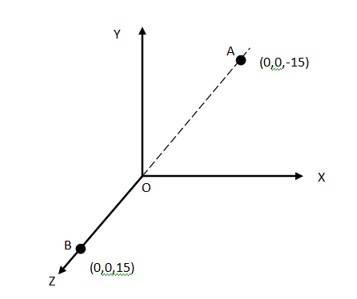Electric charge is a captivating concept that has intrigued scientists and philosophers for centuries. Class XII NCERT (National Council of Educational Research and Training) provides a comprehensive understanding of the basic properties of charge, offering students a solid foundation in the realm of electricity. In this article, we delve into the fundamental properties of electric charge as explored in the Class XII NCERT book.
Types of Electric Charge:
Electric charge comes in two distinct types - positive and negative. Protons carry a positive charge, while electrons bear a negative charge. The balance of positive and negative charges within an object determines its overall charge. When an object possesses an equal number of positive and negative charges, it is electrically neutral.
Conservation of Electric Charge:
One of the essential principles of electric charge is the conservation law, which states that the total electric charge in an isolated system remains constant. In other words, charge cannot be created nor destroyed; it can only be transferred from one object to another. This law serves as a foundation for understanding various electrical phenomena and practical applications.
Conclusion:
Electric charge is a captivating and foundational concept in physics. The Class XII NCERT book provides a thorough exploration of its basic properties, including the types of charge, conservation principles, Coulomb's law, electric fields, conductors, insulators, and charging mechanisms. Armed with this knowledge, students can venture into the intriguing world of electricity and unlock its endless possibilities in various practical applications. As we continue to harness the power of electric charge, it is vital to grasp its fundamental properties to create a more electrifying future.
Electric Fields:
Electric charges create electric fields around them. An electric field exerts forces on other charges within its vicinity. The Class XII NCERT book explains that electric field lines point away from positive charges and toward negative charges. The density of field lines reflects the strength of the electric field. Understanding electric fields is crucial in comprehending how charges interact with their surroundings and how they influence the behavior of charged particles.
Charging Mechanisms:
Class XII NCERT introduces two primary methods of charging objects - charging by induction and charging by conduction. Charging by induction involves the redistribution of charges within an object without direct contact with a charged object. Charging by conduction, on the other hand, involves the transfer of charges through direct contact with a charged object. These mechanisms are fundamental in understanding how objects acquire and redistribute charges.
FAQs on Basic Properties of Charge
Q: Two point charges q_A= 3 μC and q_B= –3 μC are located 20 cm apart in vacuum. (a) What is the electric field at the midpoint O of the line AB joining the two charges? (b) If a negative test charge of magnitude 1.5 ×10^(-9) C is placed at this point, what is the force experienced by the test charge?
A:The situation is represented in the following figure.

where ∈0 = Permittivity of free space = 8.854 X 10-12 C2N-1m-2

This force is directed along the line OA, this is because the negative test charge is repelled by the charge placed at point B but attracted towards point A.
Q: A system has two charges q_A= 2.5×10^(-7) C and q_B= –2.5×10^(-7)C located at points A: (0, 0, –15 cm) and B: (0,0, +15 cm), respectively. What are the total charge and electric dipole moment of the system?
A:

At A, the amount of charge, qA = 2.5 × 10-7 C
At B, the amount of charge, qB = -2.5 × 10-7 C
Total charge of the system, q = qA + qB = 0
Distance between two charges at point A and B = 15 + 15 = 30 cm = 0.3 m
Electric dipole moment of the system is given by p = qA X d = qB X d = 2.5 × 10-7 X 0.3 = 7.5 × 10-8 C m, along positive z axis.
News & Updates
Physics Current Electricity Exam
Student Forum
Popular Courses After 12th
Exams: BHU UET | KUK Entrance Exam | JMI Entrance Exam
Bachelor of Design in Animation (BDes)
Exams: UCEED | NIFT Entrance Exam | NID Entrance Exam
BA LLB (Bachelor of Arts + Bachelor of Laws)
Exams: CLAT | AILET | LSAT India
Bachelor of Journalism & Mass Communication (BJMC)
Exams: LUACMAT | SRMHCAT | GD Goenka Test
